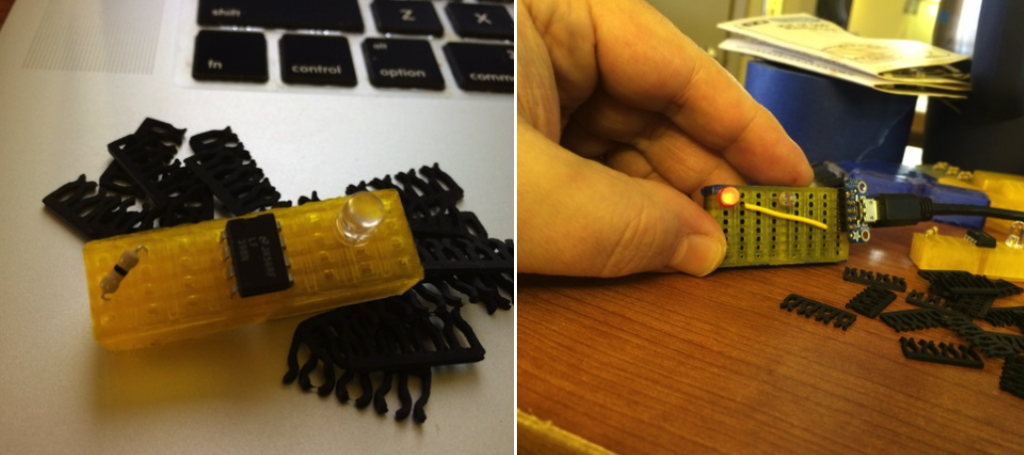
Rather than stealing the bread board from the kitchen, and thereby depriving himself of thickly sliced French toast, Les Hall decided to work with 3D printing to create his breadboard. Hall explained his lifelong connection with the platforms:
“I have been working on breadboards for school, work, and fun for all of my adult life, which means 30 years now. I have developed a wiring method for breadboards called ‘the neat freak technique’, and now I have created a technique for 3D printing breadboards.”
“Why is this cool? Well breadboards are flat, boring things. You can hook them up and make even bigger flat things. They have adhesive backing for securing them to a metal panel and that’s flat too. With 3D printing, however, we can make breadboards in any desired shape or size! They can be formed into the shape of an aeroplane fuselage or a robot car’s body, melding structure with electronics. They can cover a company logo in 3D with circuitry, they can interconnect 1,000 microcontrollers into an air cooled 3D compute array, with the air ducting morphed into the breadboard structure.”
“On a more basic level 3D printed breadboards can be any width and length with different sized holes for accepting different sized or spaced parts like audio jacks or switches for example. It’s cliche, I know, but the possibilities are endless.”
Now, I have to go get myself some French toast.
